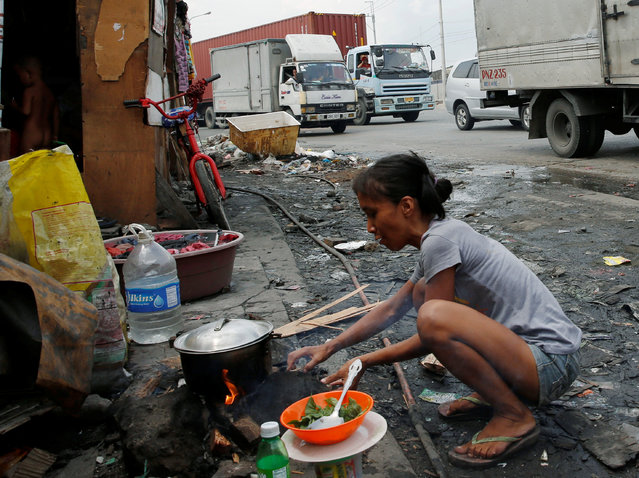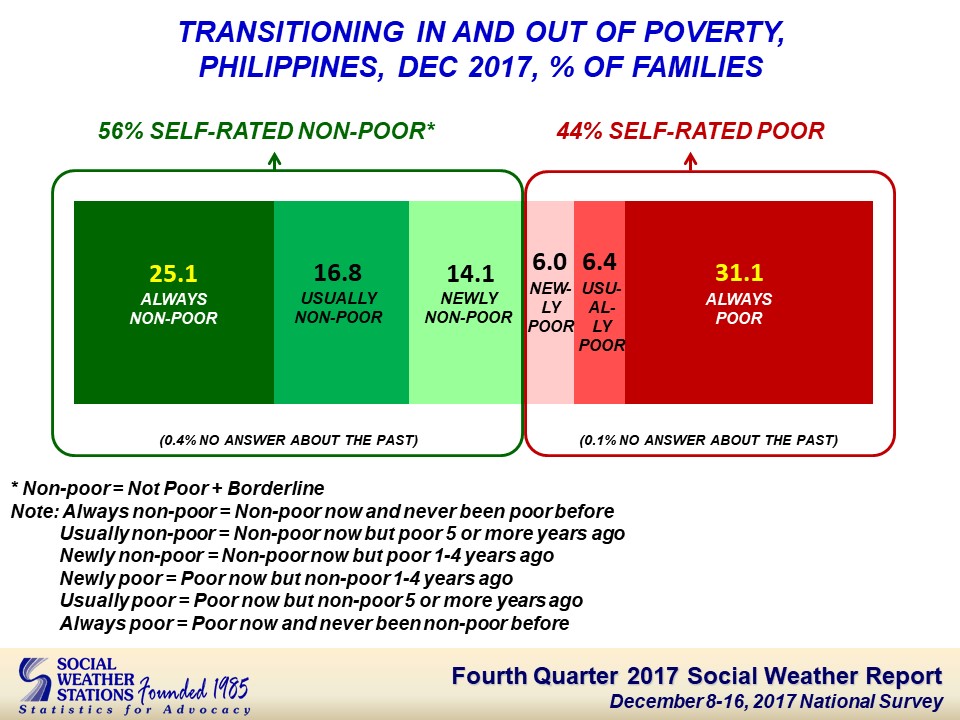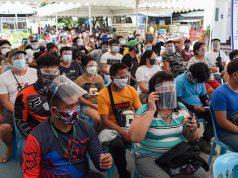
MANILA, Philippines — The number of Filipino families newly risen from poverty reached 14 percent in December, “the highest rate of newly non-poor families since the 13.8 percent recorded” when polling firm Social Weather Stations began surveying the number of families transitioning in and out of poverty.

SWS’ Fourth Quarter 2017 Social Weather Survey also found that one of three, or 31 percent, of Filipino families have escaped from poverty (17 percent “usually non-poor” and 14 percent “newly non-poor); while one of eight, or 12 percent, fell into poverty (6 percent usually poor and 6 percent newly poor).
“Usually non-poor” are those who “used to be poor five or more years ago” while “newly non-poor” count those who “used to be poor 1-4 years ago,” SWS explained
Of the 56 percent of families who rated themselves “non-poor,” 25 percent said they had never experienced being poor.
On the other hand, of the 44 percent self-rated poor families, 31 percent said they were “always poor” or “have never experienced being non-poor.”
Of the 12 percent who “transitioned” or fell into poverty, 6.4 percent considered themselves “usually poor” or “used to be non-poor five or more years ago,” while 6 percent were “newly poor,” or “used to be non-poor 1-4 years ago.”
SWS said when it first asked respondents about transitioning in or out of poverty in December 2014, “the survey found that almost three out of five self-rated poor families, or 30 percent of families overall, had always been poor,” while two of five, or 21 percent of families overall, “had experienced being non-poor in the past.”
December 2014 “was also the quarter with the highest rate of newly poor families at 10.7 percent,” SWS said.
But nationwide self-rated poverty over the last three years peaked in December 2015 at 50 percent, as did the rate of always poor families, at 40 percent.
The non-commissioned survey involved face-to-face interviews of 1200 adults nationwide with sampling error margins of ±2.5% for national percentages, and ±6% each for Metro Manila, Balance Luzon, Visayas, and Mindanao.
The survey questions on Transitioning In and Out of Poverty are as follows:
“KUNG MAHIRAP: Nangyari na po ba, kailanman sa mga nakaraang taon, na ang pamilya ninyo ay HINDI MAHIRAP? KUNG OO: Kailan po ang pinakamalapit na taon na nangyari ‘yan?” [IF POOR: Did it happen anytime in past years that your family was NOT POOR? IF YES: When was the most recent year that it happened?]
“KUNG HINDI MAHIRAP/SA LINYA: Nangyari na po ba, kailanman noong mga nakaraang taon, na ang pamilya ninyo ay MAHIRAP? KUNG OO: Kailan po ang pinakamalapit na taon na nangyari ‘yan?” [IF NOT POOR/ON THE LINE: Did it happen anytime in past years that your family was POOR? IF YES: When was the most recent year that it happened?]









